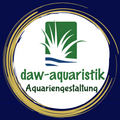Our promise of quality
Demand for high-quality hardscapes is constantly increasing
In recent years, interest in high-quality decorative elements for aquariums has grown steadily. The decorative woods are of particular importance here.
Already 20 years ago people knew about the consequences of rotting wood in the aquarium. While this was tolerable in the comparatively large and sparsely furnished aquariums of the past, the right wood is essential in today's nanocubes with the sensitive creatures they contain (e.g. shrimp).
Hardscapes are essential in mimicking natural habitats
Of course, the fascination of aquascaping goes far beyond nano-aquaristics. Even large aquariums are associated with the demands of professional aquascaping. An example is the Amazon basin, which is prominent due to its many filigree roots. This corresponds to the natural habitat of numerous demanding cichlid species such as the discus fish.
Inexplicable growth of algae and rot in the aquarium: the wrong root?
Most creatures in the aquarium (e.g. discus fish or shrimp) react sensitively to external stressors such as organic stress caused by rotting in the substrate or a faulty root. Many keepers of discus fish therefore prefer to do without natural decorations, although the natural social behavior of these cichlids only comes into play under spatial structures, such as is the case under roots that protrude from top to bottom.
Even among aquascapers who operate their aquariums exclusively for underwater gardening - i.e. without fish, shrimp or snails - the right choice of equipment is a central criterion. Unsuitable wood, which decomposes and rots under water over time, not only forms the wrong basis for the design aspect, it also interferes with the biochemistry of the aquarium water. Rotting wood leads to cloudy water and algae growth.
Be careful when buying roots: Often unsuitable woods in the trade
The enormous variety of decorative woods that are now sold on the market often makes it difficult to make the right purchase decision. Products with the same trade name but different appearance, negative testimonials from forums and prejudices can pose a problem for the layperson looking for them. Because only special types of wood are actually suitable for long-term use in the aquarium.
A lack of knowledge about how to handle the wood often leads to incorrect sorting in retail. Some unsuitable wood ends up in an aquarium, where it often latently leads to unspecific problems.
Quality promise: Why we are the right contact for you
Thanks to many years of experience in dealing with decorative wood, we can draw on extensive knowledge and have been cooperating with suppliers of high-quality decorative wood for years.
It is important to us to vouch for the quality of the products purchased from us in the long term.
The quality check:
All of our products from the woods, stones, layouts and ornaments categories come from verified sources and are pre-sorted specifically for aquaristic needs.
Every single copy goes through our quality check before cleaning and logistical sorting.
All wood and stones are examined for possible traces of visible chemical contamination. This can happen, for example, through mechanical treatment in the countries of origin. Wood and stones with color markings from packaging or traces of oil are first sorted out and subjected to special cleaning.
Hygienic standards and storage
In recent years, keeping ornamental fish free of parasites has become increasingly important. High hygienic standards when storing our products mean that our natural wood and natural stone are also suitable for keeping fish free of parasites.
All of our products are...
✔ Sorted and individually tested for aquarium needs
✔ Cleaned and/or sandblasted
✔ Not treated with chemicals
✔ Harmless to shrimp and other sensitive aquarium inhabitants
Our promise of quality is based on many years of experience in dealing with decorative wood.






